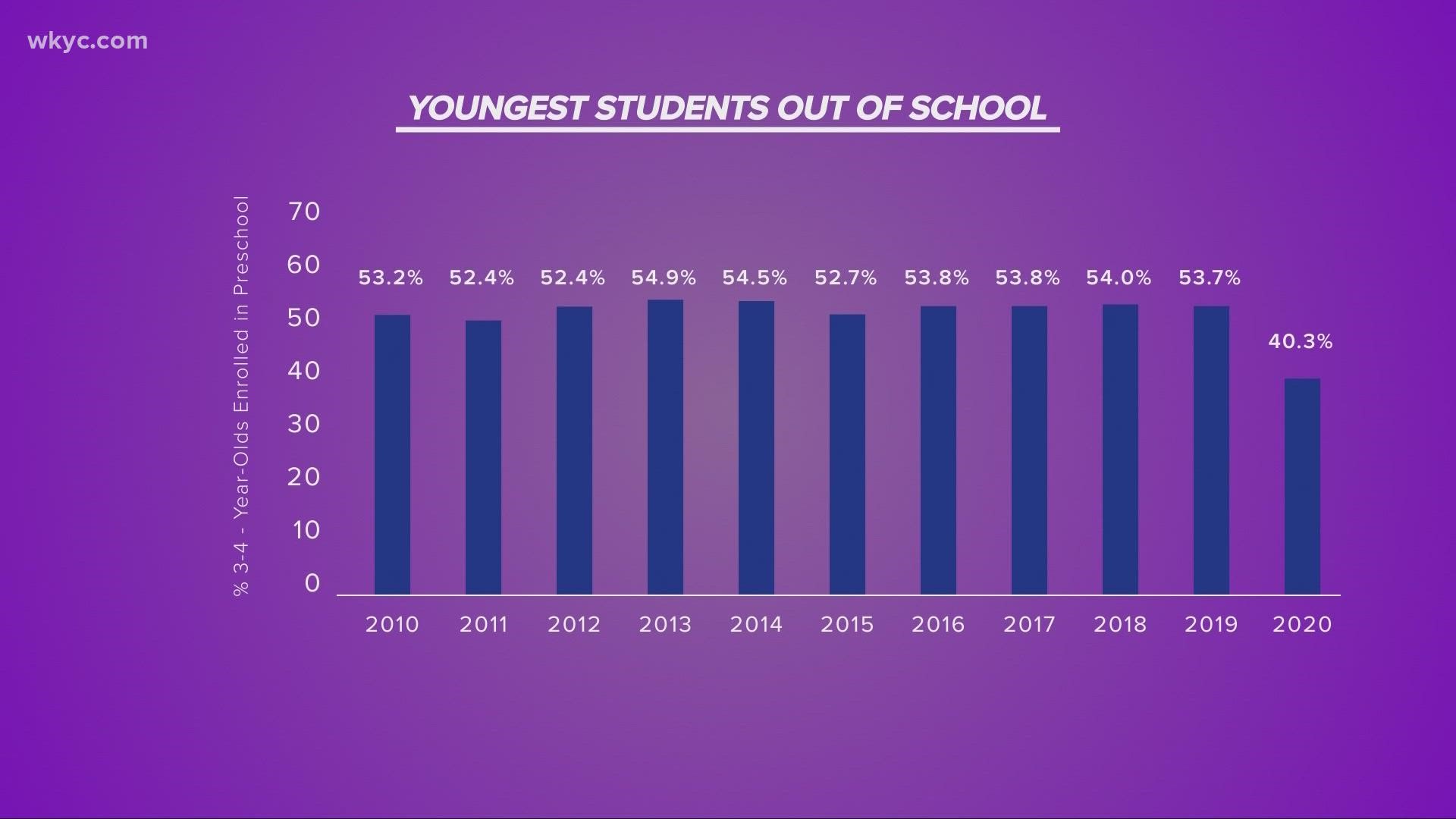AVON LAKE, Ohio — Early childhood education can be a vital part of a child's development, but right now, preschool, Head Start, and day care enrollment is at its lowest in more than a quarter century, a decline due to COVID that's especially impacting our most vulnerable children.
A little over 40% of our nation's 3 to 4-year-olds attended preschool in 2020 — the first time since 1996 the attendance rate dropped below half.
"That was kind of one of our first real inkling of 'Wow, enrollment is just dramatically different than it ever had been,'" Jenn Jackson, preschool director for Avon Lake City Schools, told 3News.
Census data shows preschool enrollment fell 25% in 2020 due to coronavirus shutdowns, 1.2 million fewer children enrolled than the year before. A large number of preschools – especially in low-income areas – never reopened, largely because of staff shortages due to pay.
"I think in Ohio, it's an average of $12-$13 an hour, where now we're seeing manufacturing firms paying up to $20-$22 an hour," Nancy Mendez, president and CEO of local child care and education non-profit Starting Point, said. "It's really hit hard our Black and brown BIPOC minority populations that are in our urban areas."
Child care providers — also vital to early childhood education — saw a drastic decline in enrollment, too. Hundreds of day cares around the state closed during the pandemic, leaving nearly 40% of all Ohio residents living in child care deserts. Many communities have few to no early childhood education options, and the effects are already being felt by kindergarteners.
"The area that's most affected is that social-emotional component," Jackson explained. "We have seen a dramatic increase in the need for intentional instruction and interventions."
"That preparedness, that social-emotional learning, that interaction with peers is something that is a potential gap that they're going carry," Case Western Reserve Professor of Social Sciences Rob Fischer pointed out, adding that gap may leave our most vulnerable children — namely low-income and rural children — at risk of falling behind socially and academically.
"In early childhood, a lot of people don’t know that 90% of the brain growth happens before kindergarten," Linnea Olbon, principal and director of the Canton City School District's early childhood program, said. "That's a year or two of critical brain development that we missed with children."
But the downward enrollment trend in early childhood education is slowly seeing a turnaround. Millions in federal dollars are now being distributed at the state level directly to child care centers to help them stabilize, bring in staff, and retain staff.
For information on finding early childhood education providers closest to you, visit starting-point.org.

